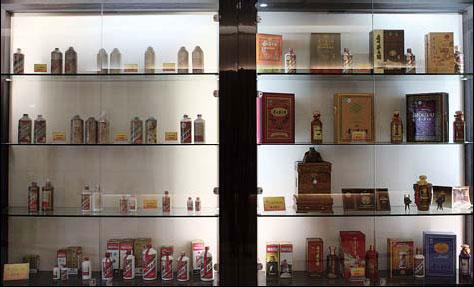Alcohol distributor advances with modern-day beverages
As a wine wholesaler based in Beijing I could not decline the invitation to visit the Moutai facilities in Renhuai, Guizhou province. I always deal with wine distribution in China and recognize the strong brand perception of Moutai for my clients, visiting the source was among my top "things to do in China".
For those not familiar with the alcohol making process, Moutai facilities may not be the most appealing. Mostly built during Mao Zedong's years, huge cement bunkers overtake the landscape. Moutai needs to be stored in relatively small ceramic jars for at least four years, meaning dozens of vault-bunker-type buildings to keep the liquor ageing. The precious baijiu also needs high security standards including electric fence, and not even pictures are allowed inside this area. The fermentation facilities are even older, originally built in white iron that has turned gray from the dust and steam from distillation.
Another secret ingredient comes from the emerald river that has carved a majestic swathe through the valley. The local grains used as a base for the liquor are special also. However, the most impressive image during the visit was the labor during the fermentation process, shoveling the grains time after time.
To attend to current demand for the famous Moutai liquor, it must be tempting for the company to use modern machinery. However, they are consistent in following what they call the "Moutai Standard". They age the liquor in ceramic jars, the older the better, even if it they are hard to manipulate and require a huge storage area.
Modern alcohol facilities usually rely on stainless steel and metal vats. Moutai doesn't. Some other components of the "Moutai Standard" are even more secretive, such as the barefoot crushing of the grains, a tradition that remains to this day.
I was particularly surprised when I was told that Moutai had released a new product oriented more for women, with a fruity blueberry taste and a lipstick inspired bottle. Likewise, Moutai will soon release a mass oriented product, selling for less than 100 yuan ($15.5) per bottle.
Reviewing the stock price, it is also surprising to find that Moutai has been resilient despite the recent convulsions of the Chinese stock market.
Is no secret that Moutai sales suffered from the government's anti-corruption campaign, limiting excessive expenditure. As a product historically linked to official banquets, Moutai seems to be one of most affected products. Even more, Moutai has faced competition from foreign liquor, beer and wine.
The stock price of Moutai plummeted to 116 yuan per share in January 2014 but, at the time of writing, recovered to about 230 yuan a share. Even more striking is that at the current share price, its price-to-earnings ratio is trailing at 18 times, which means Moutai shares might be cheaper than the average for beverage companies. Moutai looks like a stock worth buying.
Thinking of a possible future driver for a significant increase in sales, Moutai will soon launch mass-oriented products, sharing some of the secrets from the "Moutai Standard" while having a more affordable price point. This time they will use stainless tanks, less ageing and no labor-intensive shoveling.
It seems a good move to try to reach ordinary consumers who wish to taste Moutai.
While not targeted as an elite drink, the new product can be distributed through other channels, such as the Internet. This sounds a big deal and certainly worth considering if future sales skyrocket.
I am left wondering if young people will be willing to drink baijiu as their grandparents did, especially when facing a deluge of new beverage products. Maybe it is time to promote baijiu across the nation and in international markets as well. It is time to find baijiu in fancy bars in China and around the world? Next time don't forget to ask for your baijiu-Mojito cocktail. I already drank mine.
marianolarrain@yahoo.com
|
Moutai has diversified its product portfolio to meet the demands of high, medium and low-market consumers. Wang Zhuangfei / for China Daily |
(China Daily 04/13/2016 page18)















